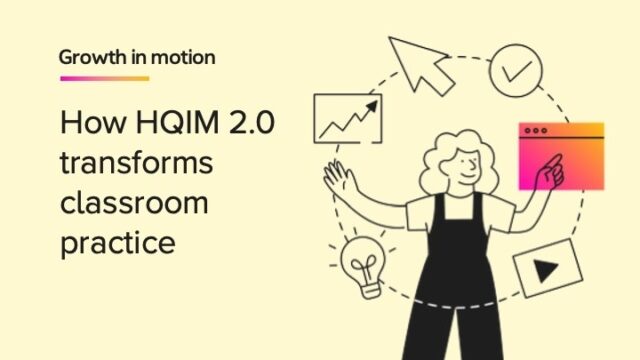
Not so long ago, literacy was interpreted as having reading and writing skills. Lessons focused primarily on these two essential skills. However, students are now expected to practice speaking, writing, reading, and listening, turning two key areas into four. Each of these literacy content areas should receive equal weight in the classroom if students are to reach an advanced level that allows them to fully participate in lessons and excel in a range of subjects.
Fitting literacy into every lesson
Literacy is a universal skill that’s important for success in all subjects.
Young people growing up today will likely do a lot of reading online. They’ll need strong literacy skills to sift through the noise. Moreover, literacy skills can help students succeed beyond school.
It’s all too easy for teachers to focus solely on the content that they teach. There is a lot of pressure to cover a significant amount of material these days. There’s a lot of knowledge to impart to students before the end of the semester, usually for exams. But are students getting sufficient time in school every day to practice their communication skills?
Content may be what is taught, but we also need to look at how content is being taught. This is where we need to consider literacy instruction. When it comes to teaching literacy in all content areas, there are a number of engaging strategies that can get your students to write, think, talk, and read about the content you’re delivering.
4 skills students can develop through teaching literacy across content areas
1. Speaking skills
Students engaged in academic conversations in large- or small-group settings isn’t something that’s going to happen overnight. It’ll take time and teacher support.
If students are to engage effectively in an academic conversation, they must have sufficient practice in sharing information with their peers in groups. Strategies such as shoulder share, chunk and chew, elbow partner, or think-pair-share are all helpful in this respect.
Learning is a social act. For every five minutes of teacher talk you deliver, give your students a couple of minutes during which they can talk together. Of course, you should be walking around the classroom and listening to what they’re saying. This gives you the opportunity to informally assess their knowledge and check their understanding, as well as ensure that the discussions stay on topic.
Conversation is a vital tool in processing new concepts and content. It’s also a useful way to help students come up with ideas to share in class.

HMH Classcraft allows students to collaborate and share their thoughts about various topics.
2. Writing skills
Just as conversation improves understanding, writing can help students make more sense of what they’re learning and relate new ideas to their own lives. After all, it’s impossible to avoid thinking if you’re writing!
Your students should be writing each day and in each lesson. Add writing into your lesson delivery with fun writing activities such as stop and jots, quick writes, one-minute essays, or graffiti conversations. Keep in mind that not every writing assignment has to be a formal one.
3. Reading skills
Teachers of any subject can scaffold reading through the use of some particularly effective strategies. These can be employed before, during, and after reading. Strategies such as reading for a purpose, previewing text, making connections and predictions, using graphic organizers, or engaging in think-alouds can support every learner.
One way to develop students’ reading skills is to set up a mini “library” of books in your class from a range of genres and reading levels. Allow your students to select books from this shelf during independent reading time. Alternatively, in classes such as science or math, you may be able to include copies of different textbooks. That way, if students are unable to understand an author’s explanations, they can consult a different book for a better understanding.
Additionally, note that every classroom, regardless of subject, can contain fiction and nonfiction books, magazines, and newspapers as part of the assigned reading. Students who are exposed to a wider variety of literature are able to broaden their knowledge and develop stronger literacy skills.
4. Listening skills
Listening is the fourth key skill area of literacy and one students are likely to practice each time you teach a lesson. You can enhance their experience by encouraging them to listen more to each other. Ask students to listen to other students sharing their work and then review it using precise examples. This works well in a range of subjects. Whether listening to another student’s composition in music, their solution to a problem in math, or their findings after conducting a scientific experiment, students will need to pay attention to give an informed opinion.
Refining students’ literacy skills
It’s more important than ever for students to practice speaking, writing, reading, and listening skills for 21st-century literacy. Mastering literacy is an important endeavor that’s not restricted to any single subject. Help your students see the value in literacy, and they’ll be just as passionate about it as you are.
This article was adapted from a blog post initially developed by the education technology company Classcraft, which was acquired by HMH in 2023. The views expressed in this article are those of the author and do not necessarily represent those of HMH.
***
To learn more about the efficacious and interactive embedded instructional routines that support teaching literacy in all content areas, visit hmhco.com/classcraft.
Be the first to read the latest from Shaped.














